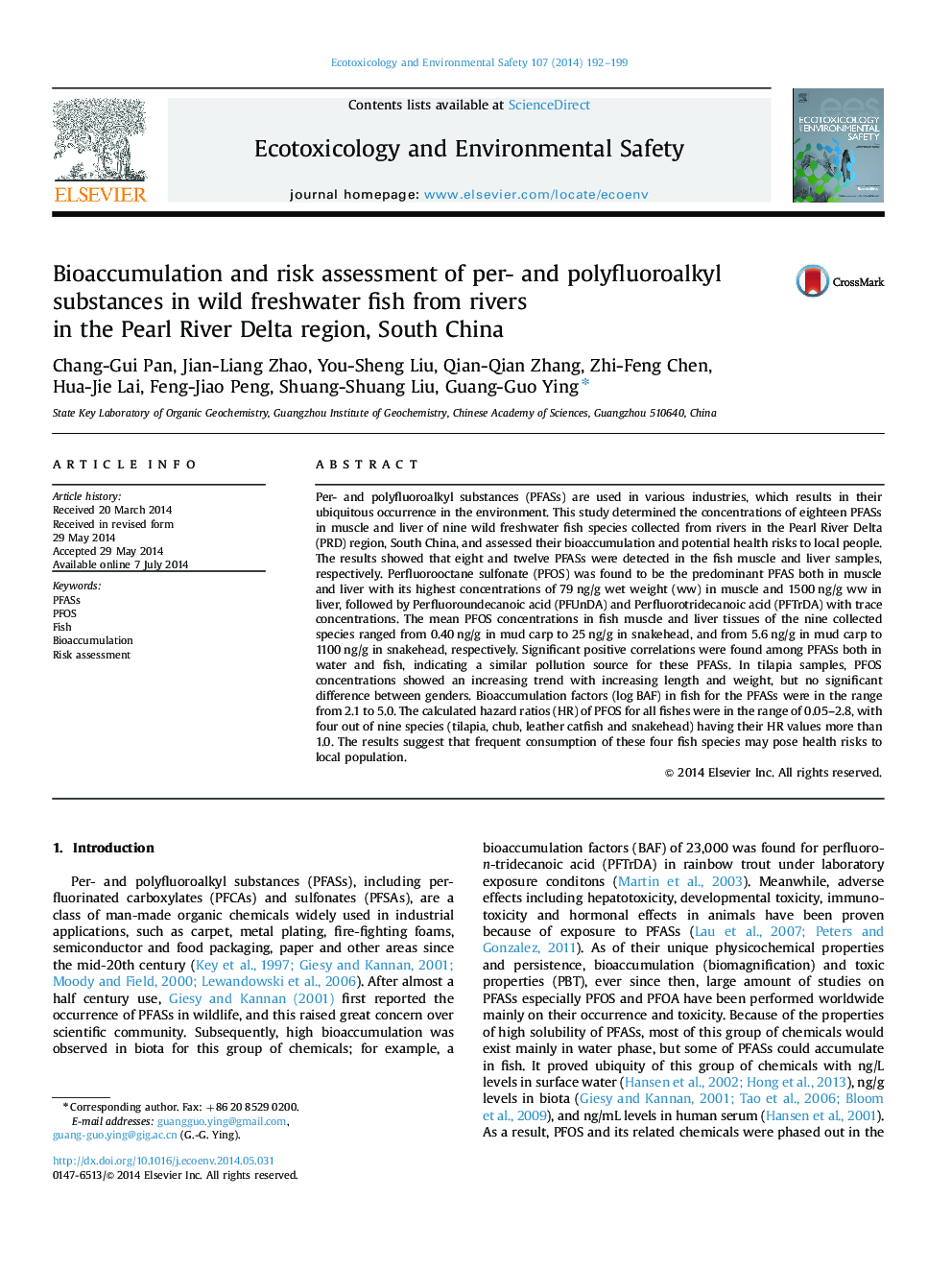| کد مقاله | کد نشریه | سال انتشار | مقاله انگلیسی | نسخه تمام متن |
|---|---|---|---|---|
| 4419964 | 1618956 | 2014 | 8 صفحه PDF | دانلود رایگان |
• Accumulation of PFASs in wild fish was investigated in a highly urbanized region.
• PFOS was predominant PFAS compound in muscle and liver of all fish samples.
• The BAF values positively correlated with the perfluoroalky carbon numbers.
• Frequent consumption of wild fish may pose health risks to local population.
Per- and polyfluoroalkyl substances (PFASs) are used in various industries, which results in their ubiquitous occurrence in the environment. This study determined the concentrations of eighteen PFASs in muscle and liver of nine wild freshwater fish species collected from rivers in the Pearl River Delta (PRD) region, South China, and assessed their bioaccumulation and potential health risks to local people. The results showed that eight and twelve PFASs were detected in the fish muscle and liver samples, respectively. Perfluorooctane sulfonate (PFOS) was found to be the predominant PFAS both in muscle and liver with its highest concentrations of 79 ng/g wet weight (ww) in muscle and 1500 ng/g ww in liver, followed by Perfluoroundecanoic acid (PFUnDA) and Perfluorotridecanoic acid (PFTrDA) with trace concentrations. The mean PFOS concentrations in fish muscle and liver tissues of the nine collected species ranged from 0.40 ng/g in mud carp to 25 ng/g in snakehead, and from 5.6 ng/g in mud carp to 1100 ng/g in snakehead, respectively. Significant positive correlations were found among PFASs both in water and fish, indicating a similar pollution source for these PFASs. In tilapia samples, PFOS concentrations showed an increasing trend with increasing length and weight, but no significant difference between genders. Bioaccumulation factors (log BAF) in fish for the PFASs were in the range from 2.1 to 5.0. The calculated hazard ratios (HR) of PFOS for all fishes were in the range of 0.05–2.8, with four out of nine species (tilapia, chub, leather catfish and snakehead) having their HR values more than 1.0. The results suggest that frequent consumption of these four fish species may pose health risks to local population.
Figure optionsDownload as PowerPoint slide
Journal: Ecotoxicology and Environmental Safety - Volume 107, September 2014, Pages 192–199
